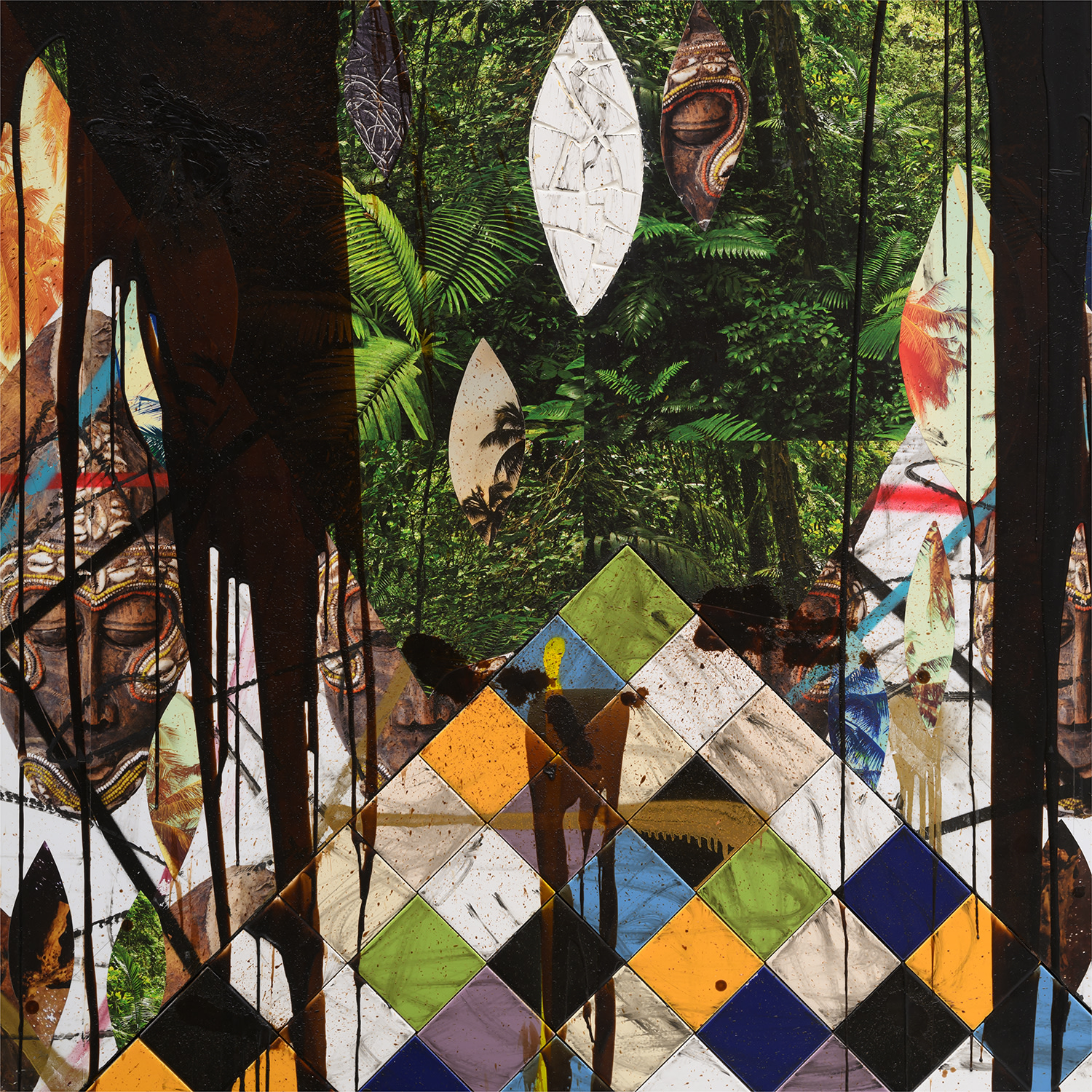









331
Rashid Johnson
Untitled Escape Collage
ceramic tile, mirror tile, vinyl, animal skin, branded red oak flooring, spray enamel, oil stick, black soap and wax
97 x 121 x 2 1/2 in. (246.4 x 307.3 x 6.4 cm)
Executed in 2018.